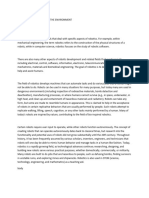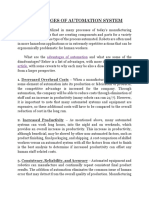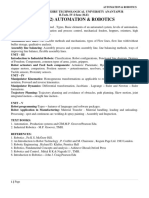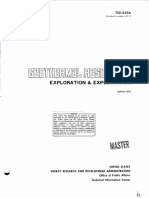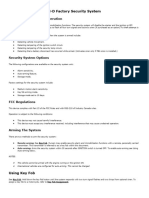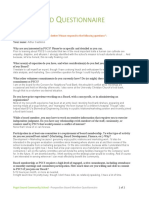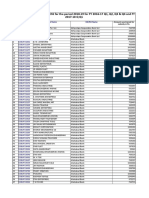ICT Presentations
Friday, 23rd February
Chapter 6
Automated systems and emerging technology
Part # 6.1
Automated Systems
· Definition/Introduction(brief)
· Advantages & Disadvantages
· Examples(Daily Life)
· How it works
· Definition/Introduction
Whether its robot welding machines in factories, autonomous grass
cutters(mowers) etc, the effect of automated systems can be seen all around
us. An automated system is a combination of softwares and hardwares which
are designed and programmed to work automatically without hte need of
human intervention.
· Advantages
1. Minimum Operating Costs
Automation is carried out by robots and systems. It is estimated that
robots can perform the work of at least five people depending on the task
that it is performing. The efficiency of the process is exponentially
multiplied with just one automation system replacing several human
laborers. This effectively removes cost expenses on employees and
energy saving can also add up to the overall savings. With the provision of
automation, parameters like streamlined process, accuracy, and minimal
wastage of resources.
2. Improved Worker Safety
Automation reduces human involvement in the tasks. This highly reduces
the risk to the safety of your employees. For example, in the case of
manufacturing industries, physical tasks were mostly performed by
workers in a traditional setup before machinery was brought into place.
Worker lives were at risk while performing certain tasks. With automation,
the participation of the workers in risk-oriented processes is reduced.
Hence, an improved employee-friendly environment is inculcated.
· Disadvantages
3. High Costs
Another potential drawback of automation in manufacturing is its high
upfront costs. Robots have a positive long-term financial impact thanks to
their higher productivity and lower ongoing costs, but they carry significant
price tags. That initial expense can be a challenge for some manufacturers.
Even if automation eventually produces a positive return on investment,
achieving that ROI can take a long time. Considering that timeline, smaller
operations with tighter operating margins may be unable to justify the
�immediate expense. Similarly, manufacturers may dig themselves into ta
deep financial pit by investing too much in automation all at once.
ii. More Impactful Errors
This lack of flexibility means automated systems can create disruptive ripple
effects if something goes wrong. One of manufacturing automation’s biggest
benefits is the reduction of human error. However, if an error does occur, it’ll
be more impactful in an automated production line than in a manual one.
Consider if a robot experienced a software glitch or had a component fall out
of alignment, causing it to place parts on a product improperly. Because each
robot down the line will follow the same motions as they normally would,
these errors would cause further mistakes and become harder to fix as
products go through production. Robots’ high speeds also mean this could
result in hundreds of defects in a matter of seconds.Industrial waste
accounts for 50% of all waste generation globally, so these mistakes are
concerning. While they may be less likely than human error, their impact is
far greater.
· Example
Automation used is factories:-
A company which manufactures fizzy drinks.
· How it works
The whole process of making fizzy drinks is done by automated
systems.
The process is controlled by a central computer which is inter-connected to
sensors, acutators, database, a monitoring station and an interface. The
process consists of various steps. As soon as the monitoring station
commands to start the formation of the product, the first step which is filling
in the ingredients which would be done by the acutators, the data base will
be having the information about the amount of the ingredients that need to
be consumed and according to that the sensors will alarm the central
computer as the amount of the ingrdients have reached the set perimeters.
As the the first step is fully done the central computer will command the
acutators to perform the next step which would be stirring and mixing the
ingredients, as the content has completely mixed up, the sensors will deliver
the message to the central computer which will tell the acutators to move to
the next step of bottling the content and adding CO2 ,ofcourse to make it
carbonated. The next step for acutators to perform is to cap the bottles and
then labelling it. This explains the use of automation is factories without
human intervention.















